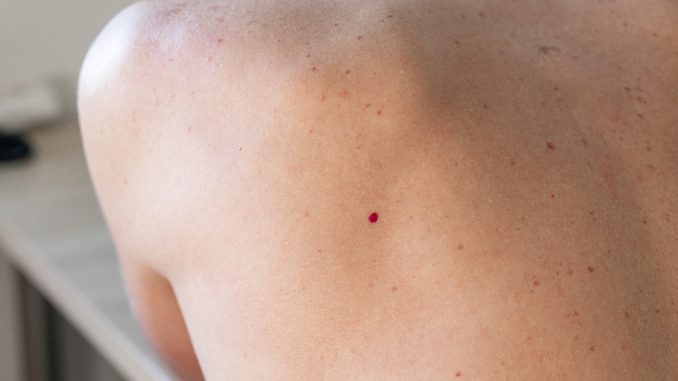
Red moles, also known as cherry angiomas or senile angiomas, are common skin growths that appear as small, bright red or purple bumps on the skin’s surface. While typically harmless, they can be a source of concern or aesthetic discomfort for some individuals. In this article, we will explore the causes of red moles and discuss various methods for their removal.
Causes of Red Moles
The exact cause of red moles is not yet fully understood. However, several factors have been associated with their development:
- Genetic Predisposition: There may be a genetic component to the development of red moles. If your family members have a history of cherry angiomas, you may be more prone to developing them as well.
- Age: Red moles tend to appear more frequently as people age. They are commonly observed in individuals over the age of 30, with the frequency increasing as they get older.
- Hormonal Changes: Hormonal fluctuations, such as those occurring during pregnancy, may contribute to the development of red moles. It is not uncommon for women to notice an increase in cherry angiomas during pregnancy.
- Exposure to Sunlight: Prolonged and excessive exposure to sunlight and ultraviolet (UV) radiation may be associated with the formation of red moles. Protecting your skin from the sun’s harmful rays is crucial for overall skin health.
- Liver Dysfunction: Some studies suggest a potential link between liver dysfunction and the presence of cherry angiomas. However, further research is needed to establish a definitive connection.
Methods for Red Mole Removal
While red moles are generally harmless and do not require treatment, you may choose to have them removed for cosmetic reasons or if they become irritated or prone to bleeding. Here are some common methods for red mole removal:
- Electrocautery: This procedure involves using a small electric current to burn and remove the red mole. It is a quick and effective method typically performed under local anesthesia by a dermatologist.
- Laser Treatment: Laser therapy utilizes focused light energy to destroy the blood vessels feeding the red mole, causing it to shrink and fade over time. Multiple sessions may be required to achieve desired results.
- Cryotherapy: Cryotherapy involves freezing the red mole with liquid nitrogen, causing it to blister and eventually fall off. It is a relatively quick and straightforward procedure, often performed by a dermatologist.
- Shave Excision: In this method, a dermatologist uses a scalpel or razor to shave off the raised portion of the red mole. Local anesthesia is administered before the procedure to ensure minimal discomfort.
- Natural Remedies: Some individuals opt for natural remedies, such as applying apple cider vinegar, tea tree oil, or iodine topically to the red mole. While these remedies are not scientifically proven, they may be worth exploring as a conservative approach.
Important Considerations
Before deciding on red mole removal, it is crucial to consult with a qualified dermatologist or healthcare professional. They can evaluate the moles, determine the most suitable treatment option, and rule out any potential health concerns.
It is also essential to note that even after successful removal, new red moles may still appear over time. Regular skin checks and sun protection measures, such as wearing sunscreen and protective clothing, can help maintain overall skin health and prevent the formation of new moles.
Conclusion
Red moles, or cherry angiomas, are common benign skin growths that can occur due to various factors such as genetics, age, hormonal changes, sunlight exposure, and liver dysfunction. While typically harmless, red moles can be removed for cosmetic reasons or if they cause irritation or bleeding.
Share this:
- Click to share on Facebook (Opens in new window)
- Click to share on Twitter (Opens in new window)
- Click to share on WhatsApp (Opens in new window)
- Click to share on Reddit (Opens in new window)
- Click to share on Telegram (Opens in new window)
- Click to share on Pinterest (Opens in new window)
- Click to share on LinkedIn (Opens in new window)